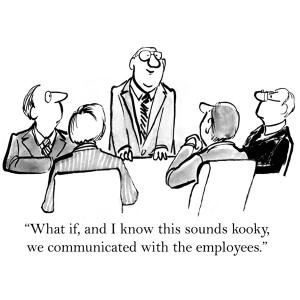Posted by Adam Thompson on the 18th November 2015
“You’re not going to like the next thing”. Gareth was the General Manager of the Operations Division.
“Go on” he said.
I pointed to his whiteboard, where across the top was written ‘By Christmas 2018 we will have delivered or be capable of delivering…‘ and underneath were five clear results he intended to deliver by then.
Gareth pointed to the second one down “I see what you mean about real results now. I originally had written ‘Expanded Production Capacity’ but that means nothing, I can achieve that by approving just one extra hour of overtime.”
“So why does this work better?” I asked, tapping the whiteboard where it said ‘Northern plant constructed, stable, shipping 1.4m units, 20% less cost per unit than current.’
“Because I can do this” Gareth said, and drew a box next to it. “And if by Christmas 2018 I can’t do this….” and with a flourish ticked the box, “then my Managing Director is not going to be happy. I have clarity.”
“Great. So now you need to break this work down into shorter timeframes.”
“But isn’t that the job of my directs?”
“Why would it be their job?” I asked.
“Well that Levels of Work training you gave us made a lot of sense on how work naturally organises, and I thought the shorter timeframes were what my people were accountable for.”
“True in a way.” I replied. “But tell me this; are any of them accountable for the whole Operations Division landing where it needs to in 3 years?”
“No, that would be me.”
“So who is therefore the person who needs to decide the steps required to land the whole Operations Division there in 3 years?”
“Me” Gareth replied with a nod.
“Exactly. So…for each of your results you have on your whiteboard, write next to it where it needs to be by 30 June 2017 in order to be on track for Christmas 2018“.
“Why 30 June 2017?”
“Because that’s 18 months away, which puts it right in the middle of….”
Gareth finished the sentence: “…my direct report’s timeframe of accountability”.
“Which means they will be able to….”
“…see how their own 18-month results for their departments are part of the 18-month results of the overall Operations Division”.





